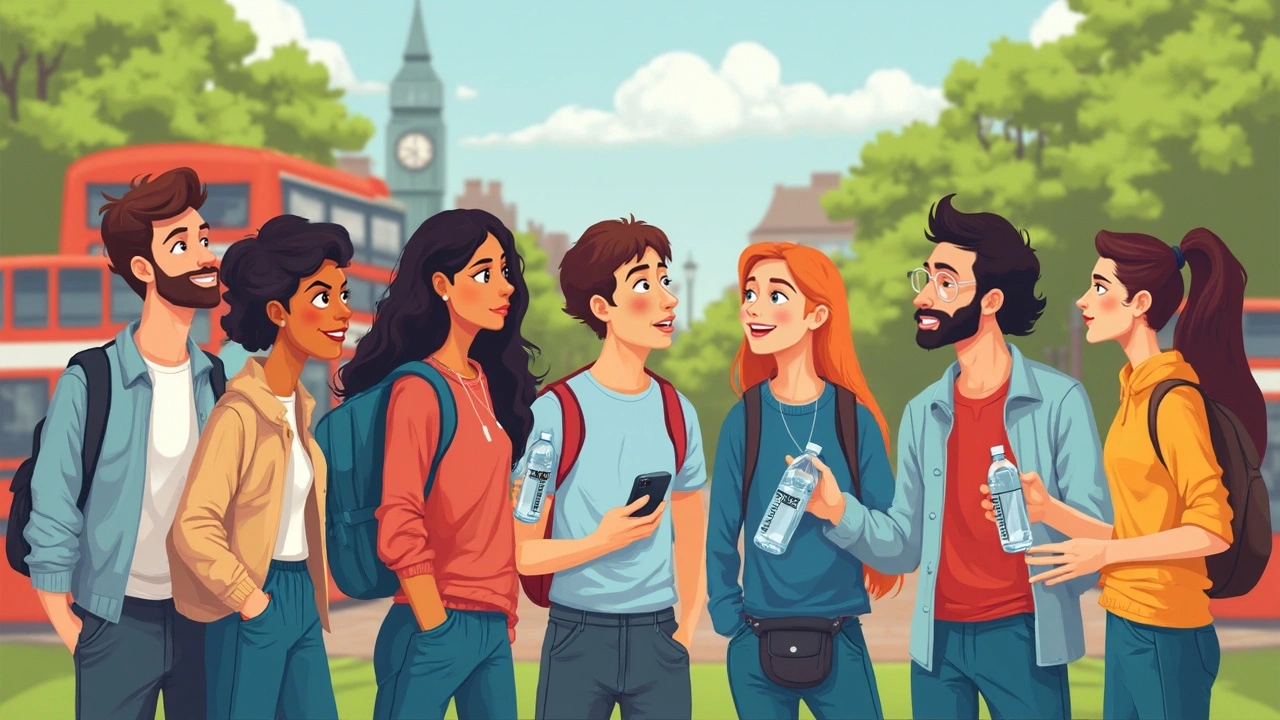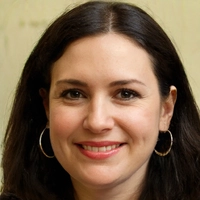Hydration Hacks: How Much Water Should You Drink on Spironolactone?

Drinking water seems simple, right? But once you start taking a diuretic like spironolactone, things can get tricky fast. You probably already know that spironolactone makes you pee more often. What doesn’t get enough attention is just how careful you need to be about what—and how much—you drink every day. Slip up and it’s not just annoying bathroom trips; it’s headaches, brain fog, heart palpitations, and muscle cramps that show up when your body’s out of balance. And yes, you can get there just by doing what most of us think is healthy: chugging more water.
Why Spironolactone and Hydration Are Tied Together
Spironolactone sits in that awkward spot of being both a lifesaver and a mini-curveball for your body. It’s prescribed for everything from stubborn acne and hormonal swings to high blood pressure or heart failure. But the side effect list? Not exactly tiny print—everyone hears about “peeing more.” The twist is, as a potassium-sparing diuretic, spironolactone nudges your kidneys to get rid of extra sodium and water, but it holds onto potassium. This is what’s meant by ‘electrolyte imbalance’—and it matters way more than most people realize.
When your kidneys shuffle out more sodium and water, you lose important fluids and salts. Your heart, brain, muscles—every cell—depend on just the right mix to keep stuff moving, pumping, and firing the way it should. Suddenly, a tiny misstep in the hydration game can mean feeling dizzy, out of breath, confused, or even faint. According to a review in the Journal of Clinical Hypertension (2023), nearly 22% of people on spironolactone report mild dehydration or signs of electrolyte disturbances in the first month. That’s not rare.
The body isn’t great at handling rapid water loss, especially if you’re active, workout, or live somewhere hot. There’s also the potassium angle: because spironolactone helps your body hold onto potassium, drinking gallons of water might dilute sodium, but it won’t flush out extra potassium. That’s where you can land in hot water with hyperkalemia—think muscle weakness, irregular heartbeat, or even emergency room stuff.
How do you know if dehydration is sneaking in? Frequent signs include dry mouth, thirst, dark urine, feeling tired or lightheaded, and drive a weird craving for salty or tangy foods. Pay special attention if your lips chap or you find standing up too quickly leaves you seeing stars. But what about the flip—the risk of drinking too much? Overhydration is real here, especially paired with lower sodium. If you’re guzzling water in between bathroom runs, headaches and swelling can sneak up for a totally different reason. It’s a careful dance.
A worthwhile tip you won’t find on most spironolactone bottles: always check in with your doctor for a specific water goal. They may ask about your activity level, job (do you work outside?), and even diet. Managing a medication that messes with sodium and potassium? Your “normal” might not cut it anymore. That’s why guidelines are a must, not just guesses.

How Much Water Is “Just Right” When Taking Spironolactone?
Let’s clear up the biggest myth: the classic “eight glasses a day” rule. That’s not carved in stone, especially for anyone on a diuretic. When you’re taking spironolactone, the ideal amount of water isn’t universal—it depends on what dose you’re on, your kidney function, your age, body weight, activity level, and whether you stick to a low-salt diet.
Most healthcare providers recommend aiming for about 1.5 to 2 liters (roughly 6-8 cups) of water a day if you’re on the standard starting dose. That keeps you safely away from dehydration without diluting your electrolytes too much. If you’re working out hard, sweating a lot, or live somewhere blazing hot, you might need a bit more. But it isn’t about doubling your intake overnight. Too much, and you can tip your sodium out of balance, winding up with symptoms like confusion, muscle spasms, or nausea.
Here’s a little science to break it down. In a 2022 real-world study, people who drank between 1.5 and 2 liters of water while on spironolactone reported fewer side effects and fewer ER visits than those who went way above or below. What really matters is consistency—don’t binge half a gallon at once, but space it out across your waking hours. Tracking your intake (yes, with just your phone notes or a bottle that keeps count for you) can help you realize if “just a few sips” is really enough.
Wondering how to spot the sweet spot for your body? Your urine is a surprisingly blunt tool—light yellow or pale straw is perfect. Constantly dark means you’re behind, while clear as water can mean you’re overdoing it. People often underestimate how quickly things can change based on menstrual cycles, stress, or even just that extra cup of coffee at work. The trick is to listen in and adjust, but not obsess. If you ever get leg cramps, heart palpitations, or a weird metallic taste, talk to your doctor right away—don’t try to “fix” it by tweaking your water without checking in first.
Getting specific with your hydration? Look at this quick guide for reference:
| Body Weight (lbs) | Usual Water/Day | Suggested Water/Day (on Spironolactone) |
|---|---|---|
| 100-130 | 1.2 - 1.6 L | 1.3 - 1.8 L |
| 130-170 | 1.5 - 2.0 L | 1.6 - 2.2 L |
| 170-200 | 2.0 - 2.5 L | 1.8 - 2.4 L |
Remember, people on higher doses or with kidney issues should work closely with their provider (and probably do regular blood work). Your ideal might run lower or higher, but your hydration isn’t something to eyeball when you’re taking a medication that literally changes your body’s salt-and-water thermostat.
Not sure about your personal water target or still feeling off? Sites like how much water to drink on spironolactone break down all the signs to watch out for, plus tips on what to do if you have symptoms.

Easy Hydration Tips and Life Hacks
So, how do you make day-to-day hydration less of a puzzle and more of a routine? It’s all about being a little strategic without making your life “about” water all day. Here are hacks that actually work:
- Space it Out: Don’t chug your daily intake at once; aim for small, steady amounts—like a half mug or bottle every couple of hours. Set reminders if you get distracted.
- Check Your Urine: This might sound odd, but the easiest hydration hack is noticing your pee. A pale yellow color is perfect. Too dark? Up your intake. Crystal clear? You might want to slow it down.
- Go Easy on Caffeine and Booze: Both can sneakily dehydrate you, especially when you’re already making more bathroom trips on diuretics. Limit coffee, tea, and alcohol—keep them balanced with a glass of water in between.
- Add a Pinch of Salt if Cleared by Doctor: Some people need to add a pinch of sodium or try electrolyte drinks (low sugar) if their sodium tends to run low—but only under medical advice. Don’t self-medicate with “sports drinks.”
- Eat Your Fluids: Don’t forget that watery fruits like watermelon, cucumber, or oranges count toward your hydration goal. Soup and smoothies too!
- Monitor Your Symptoms: Keep track of any dizziness, nausea, swelling, muscle twitches, or confusion—and don’t guess. Share these with your doctor if they show up.
- Set Boundaries: If your doctor says “don’t drink more than X liters,” stick to that. Too much is not better here.
- Track with a Bottle: Use a marked water bottle or an app. Seeing those tick marks climb is pretty satisfying.
- Hydrate Before and After Workouts: Especially if you’re moving, sweat is an invisible water thief. A glass before and after is smarter than gulping after you’re already super thirsty.
- Be Mindful During Illness: If you’re sick with vomiting or diarrhea, your risk goes up—call your doctor about adjusting your intake. Don’t try to “power through.”
Most people find that making hydration a gentle habit—rather than becoming fixated—leads to longer-lasting, better results. Hydration isn’t a weekly challenge; it’s something you layer in, a little bit at a time.
The coolest part? Some people discover their skin looks better, their energy is steadier, and even brain fog lifts, once they get their water balance dialed in. That’s partly why dermatologists recommend spironolactone for acne—it helps, but it’s the routine around hydration that magnifies the glow. There’s even fresh research suggesting that folks who find their “hydration sweet spot” tend to have fewer medication setbacks, stick with their treatment plan, and just feel a whole lot better each day.
So, if you ever catch yourself thinking, “Am I drinking too much… or not enough?” while on spironolactone, you’re one step ahead already. Just follow the signs, stick close to your doctor’s recommendations, and use these hydration hacks to keep things smooth. And remember, you’re literally helping your body do its best work—she needs the help, and you’ll probably feel it within a week or two.



Ari Kusumo Wibowo
Honestly, hydration while on spironolactone feels like walking a tightrope sometimes. You don't wanna get dehydrated cause that messes with your kidneys and blood pressure, but chugging a gallon a day could screw up your electrolytes. It's wild how little room there is to mess up.
One thing I’d say is forget the old '8 cups a day' rule when you’re on meds like this, it’s about paying attention to your body’s signals. Dizziness, muscle cramps, irregular heartbeat – those are red flags you might be over- or under-hydrating. Anyone here had weird symptoms they only realized were related to hydration?
Personally, I track my water intake and salt levels pretty closely now—I use an app that lets me log symptoms as well. Sounds nerdy but it’s saved me from some ugly days. I do think docs don’t always stress this enough, especially the part about balancing electrolytes, not just guzzling water.
Hannah Gorman
While I wholeheartedly agree with the basic premise of monitoring your hydration when taking spironolactone, I find it astonishing how many people seem to overlook the complexity involved in managing electrolytes. We are not just talking about water; we are discussing an intricate balance that impacts myriad physiological processes.
What this article skims over too lightly is the finer point of potassium levels, which can become dangerously elevated with spironolactone due to its potassium-sparing nature. This calls for a biochemical understanding that far exceeds the casual advice of 'drink more water'. One must regularly test blood minerals to prevent complications such as hyperkalemia, which can be life-threatening.
It fuels my frustration when people treat these health matters as trivial, yet expect miraculous results. A more diligent approach to monitoring and education is indispensable and frankly non-negotiable.
Tatiana Akimova
Super important post! Hydration is something often underestimated when people start meds like spironolactone. But hey, it’s not just about drinking water like it’s some magic cure, you gotta think about electrolytes, diet, even how much you sweat through the day.
I remember the first time I took spironolactone, I ignored the hydration advice and ended up dizzy and super tired. That was a wake-up call for me! Now, I keep a bottle with me, sip water steadily throughout the day, and balance it with foods rich in magnesium and potassium, which helps keep me stable.
Also, something that really helped was asking my doctor about daily limits of water intake because too much water can dilute electrolytes dangerously. So yeah, check with your healthcare provider, keep track of what you eat and drink, and stay alert for symptoms like cramps or confusion.
Calandra Harris
Look, matter of fact, most people aren’t even aware spironolactone can alter your entire fluid and chemical balance. They just gulp water thinking it’s the hero. WRONG.
This medication is about discipline and awareness. Know your body. Excess water intake while on it will mess with your sodium and potassium levels. You must be strategic, not sloppy. It’s science, not superstition.
People need to realize hydration isn’t some universal number. It’s individualized according to your dose, kidney function, and sweat rate. There is no one-size-fits-all. So do your homework and act accordingly. Otherwise, you are basically playing Russian roulette with your organs.
Dan Burbank
This dialogue around hydration on spironolactone demands a higher level of scrutiny from a truly educated perspective. It is hardly sufficient to merely 'listen to your body' without rigorous laboratory data to underpin such subjective measures.
Indeed, while being alert to signs of imbalance is crucial, the idiosyncratic nature of such responses across individuals can and does render anecdotal methods grossly inadequate for ensuring safety.
In my estimation, a weekly or bi-weekly serum electrolyte panel represents the only genuinely valid practice for those on prolonged spironolactone therapy, particularly when dosages reach the upper threshold.
Without such measures, the risks incurred by negligent management of hydration and electrolyte equilibrium are quite simply untenable.
Moreover, the article's failure to emphasize the criticality of potassium level monitoring is a glaring omission that must be addressed in any serious discourse on this subject.
Anna Marie
I truly appreciate the nuanced take in this post because hydration needs when on spironolactone aren’t black and white. It’s essential to approach this with care and listen to the body’s signals, but also to work closely with healthcare providers.
What helps is setting a consistent routine: regular meal times, hydration reminders, and keeping a journal of symptoms or changes to discuss during medical appointments. We’re all unique, so what works for one might not for another, but these practical steps support better outcomes.
Important too is not panic if you miss a glass or two; stress can affect your body negatively just as dehydration can. Gentle mindful care wins the long game.
Abdulraheem yahya
Spironolactone hydration balance is tricky no doubt. In my experience with patients, we often miss that hydration isn’t only about fluid but trace elements, electrolytes that shift the bigger picture entirely.
In tropical climates, for instance, sweating can throw off potassium and sodium quickly. So patients need location-specific advice, not just generalized rules. The article's touch on real consequences like dehydration symptoms is helpful but understates environmental and lifestyle factors.
Guidelines need integrating actual patient routines and climates, so hydration advice is not just medically sound but truly practical.
Preeti Sharma
Honestly, this whole conversation about hydration while on spironolactone feels a bit overblown. People get hyped up about drinking a certain amount of water, but isn't our thirst mechanism there for a reason?
Yes, electrolytes matter, but obsessing over precise intake can create anxiety that might be worse than the actual risks. We have to trust our bodily wisdom more and medicalize less. Sometimes, the best approach is to let your natural signals guide you rather than following rigid hydration quotas.
Just my two cents from watching how humans have adapted over millennia.
Ted G
All this talk about hydration on spironolactone feels suspiciously convenient to pharmaceutical agendas. Are we sure there's not an overemphasis on blood tests and hydration protocols to push extra monitoring and profits?
Ever considered how the industry might benefit from promoting constant vigilance on hydration when the risks could be exaggerated? The body's natural balance often knows best, yet we're told to question every instinct and symptom.
Be wary. Sometimes less intervention is more.
King Shayne I
Look I disagree with the conspiracy stuff. Staying hydrated is just basic health, especially on meds like spironolactone which mess with your electrolyte levels.
If you’re not paying attention to potassium and water balance you’re being reckless. I’ve seen people go into emergency with hyperkalemia because they ignored simple rules.
The key is not to overthink but to respect the guidelines and check in regularly with a healthcare professional. Don’t be careless about this stuff.
jennifer jackson
Seriously, this topic is so important. It's often overlooked how critical proper hydration is on spironolactone, because it’s not as simple as just drinking a lot of water.
It takes a delicate balance, and being proactive about symptoms like weakness, cramps, or dizziness is key. Listening to your body and pairing that with medical advice creates a safe path forward.
We all need reminders that self-care includes hydration awareness, especially when meds affect our fluid balance.